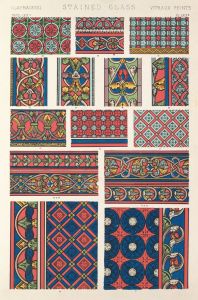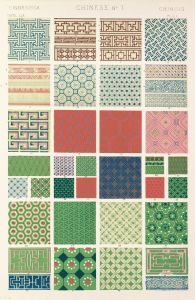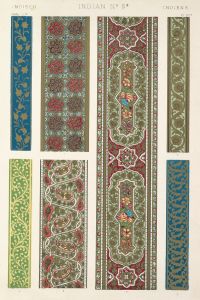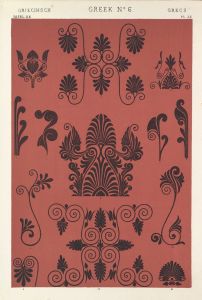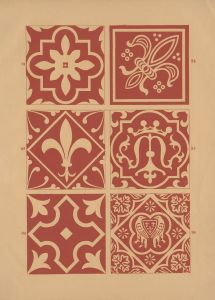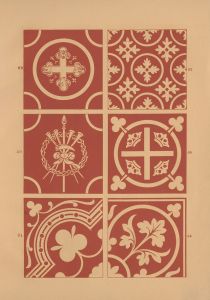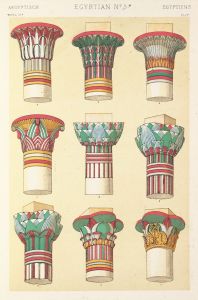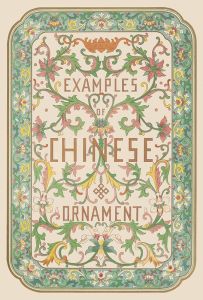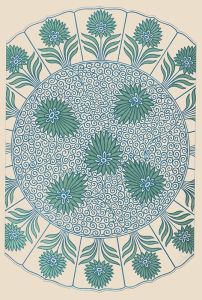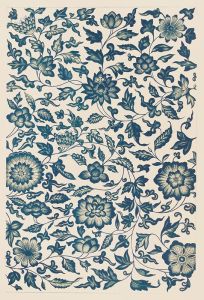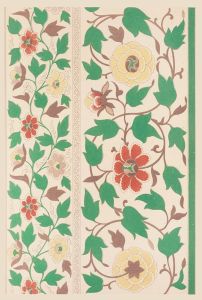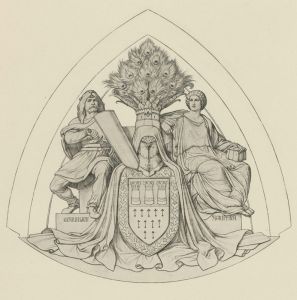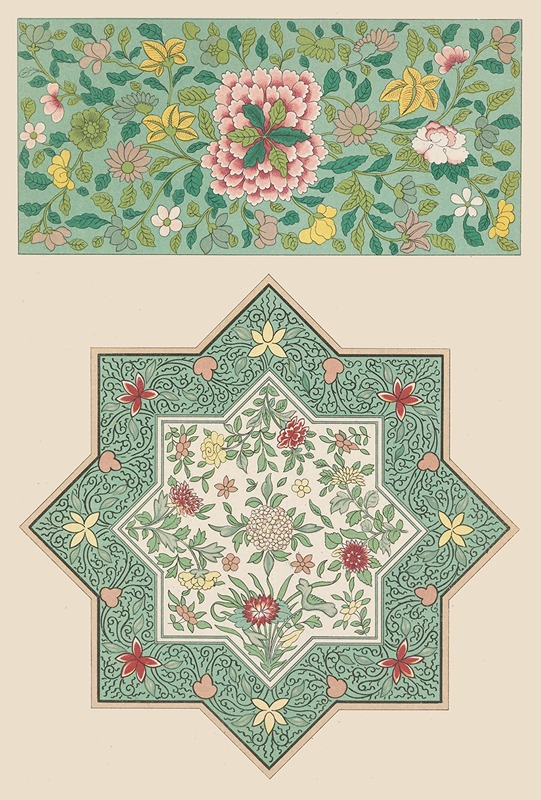
Examples of Chinese ornament, Pl.78
A hand-painted replica of Owen Jones’s masterpiece Examples of Chinese ornament, Pl.78, meticulously crafted by professional artists to capture the true essence of the original. Each piece is created with museum-quality canvas and rare mineral pigments, carefully painted by experienced artists with delicate brushstrokes and rich, layered colors to perfectly recreate the texture of the original artwork. Unlike machine-printed reproductions, this hand-painted version brings the painting to life, infused with the artist’s emotions and skill in every stroke. Whether for personal collection or home decoration, it instantly elevates the artistic atmosphere of any space.
"Examples of Chinese Ornament, Pl. 78" is a plate from the influential design book The Grammar of Ornament, authored by Owen Jones and first published in 1856. Owen Jones (1809–1874) was a British architect and designer renowned for his contributions to design theory and his efforts to document and promote decorative arts from various cultures. His work aimed to provide a comprehensive visual reference for designers and artists, emphasizing the importance of studying historical and global ornamentation.
The Grammar of Ornament contains 100 color plates, each showcasing decorative motifs and patterns from different cultures and historical periods. Plate 78 specifically focuses on Chinese ornamentation, presenting a selection of traditional Chinese decorative designs. These designs reflect the aesthetic principles and artistic traditions of Chinese culture, characterized by intricate patterns, harmonious compositions, and symbolic motifs.
The illustrations in Plate 78 were created using chromolithography, a then-innovative printing technique that allowed for the reproduction of vibrant, multi-colored images. This method was crucial in accurately capturing the intricate details and vivid colors of the original designs. The patterns depicted in this plate are drawn from various sources, including Chinese ceramics, textiles, and architectural elements, showcasing the diversity and richness of Chinese decorative art.
Jones's presentation of Chinese ornamentation in The Grammar of Ornament was part of his broader mission to promote cross-cultural appreciation and understanding of design. He believed that studying the decorative arts of different cultures could inspire contemporary designers and encourage the creation of new, innovative works. In the book, Jones emphasized the importance of adhering to certain design principles, such as the use of geometric forms, symmetry, and the integration of ornament with structure.
While Plate 78 provides a visual representation of Chinese ornamentation, it is important to note that the designs were interpreted and adapted by Jones and his team rather than being direct reproductions of specific historical artifacts. As such, the plate reflects a 19th-century European perspective on Chinese art and design, shaped by the cultural and artistic context of the time.
Today, The Grammar of Ornament remains a significant resource for scholars, designers, and artists, offering insight into the decorative traditions of various cultures, including China. Plate 78 serves as a testament to the enduring influence of Chinese ornamentation and its role in the global history of design.





